THE RACERS, PART II.
 Sunday, April 14, 2024 at 08:37AM
Sunday, April 14, 2024 at 08:37AM By Peter M. DeLorenzo
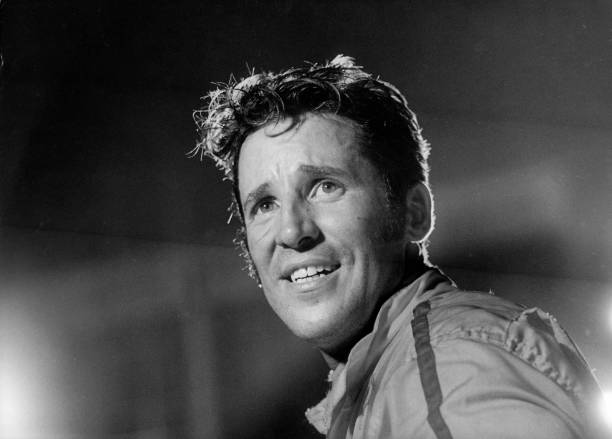 (Getty Images)
(Getty Images)
Mario Gabriele Andretti - this picture of Mario is after he won the 1970 12 Hours of Sebring - is one of the greatest racing drivers of all time. The Italian-born American is one of only three drivers to win in Formula 1, Indy-type cars, World Championship sports cars and in NASCAR. (Dan Gurney and Juan Pablo Montoya were the other two.) Mario became only the second American driver to win the Formula 1 World Championship when he won it in 1978 driving a Lotus-Ford for Colin Chapman. In fact, no American racing driver has won an F1 race since Mario won the 1978 Dutch Grand Prix.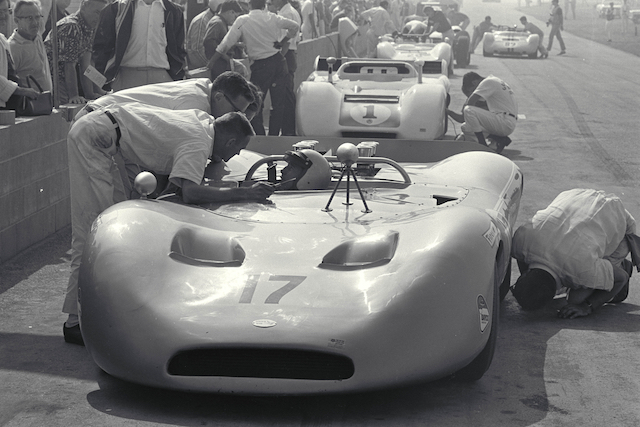 (Getty images)
(Getty images)
Riverside International Raceway, October 1967. Mario Andretti in the Ford-powered Honker II, entered by Holman & Moody. Mario wrestled the evil-handling machine to the fifth qualifying position, two seconds off of the pole time, but did not finish due to gearbox issues.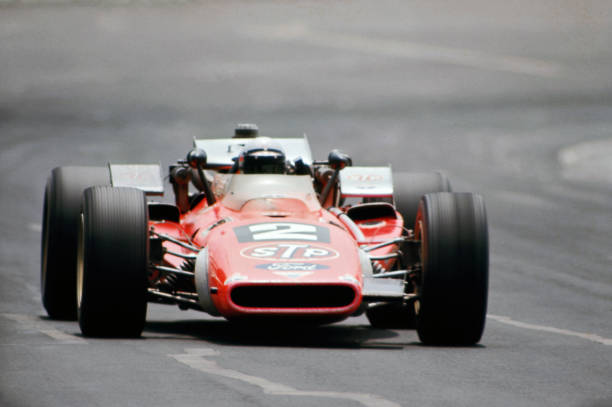 (Getty images)
(Getty images)
Besides his F1 exploits, Mario won four championships in Indy cars (one in CART and three in USAC), he won the Daytona 500 in 1967 and the 1969 Indianapolis 500 (above) driving for Andy Granatelli. Mario was named United States Driver of the Year in three decades: 1967, 1978 and 1984. Mario is one of only three drivers to have won on road courses, paved ovals and dirt tracks in the same year, and he did it five times. After Mario scored his final Indy car win in April 1993, he became the first driver to have won Indy car races in four different decades.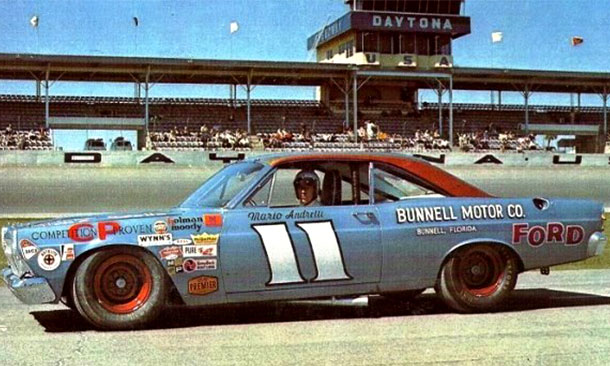 (indycar.com)
(indycar.com)
Mario won 109 major races during his spectacular career. Besides his Indy 500 win in 1969 (and missing out on so many others), my most memorable wins for Mario were the 1967 Daytona 500 and the 1970 12 Hours of Sebring. Discounted by the NASCAR establishment, Mario was in the No. 11 Ford Fairlane prepared by Holman & Moody for the race, and the team was split as to whether or not they were supporting the Italian-American interloper. His teammate was the great Fred Lorenzen, but it was clear after practice and qualifying that Mario had been given a engine that was down on power. He made his displeasure known to Ford - it was a one-off race for Mario - and he was given a new engine for the race. The only problem was that Mario had set up his car in qualifying super-loose to compensate for the lack of power, which meant that in the race he would be forced to hang the rear end out and dirt track it for the entire 500 miles if he wanted to go fast. Which is exactly what Mario did in a jaw-dropping display of car control the likes of which the NASCAR boys had never seen. But Mario had one more hurdle thrown at him before his trip to Victory Lane. He made his last pit stop at the same time as Lorenzen, but the pro-Lorenzen Holman & Moody crew kept Mario up on the jack stands until Freddie got down to the end of the pit lane. Furious, Mario caught and passed Lorenzen and went on to win. It was a very unpopular victory in NASCAR Land, but for Mario it was one of his greatest performances.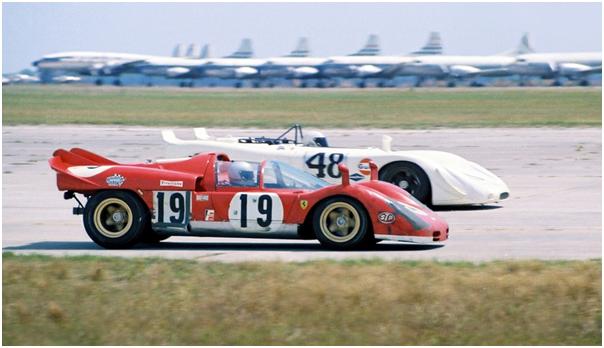 (Sports Car Digest)
(Sports Car Digest)
The 1970 12 Hours of Sebring was another incredible performance by Mario. Driving for the factory Ferrari team (with co-driver Arturo Merzario), Mario put the No. 19 Ferrari 512 S on the pole, almost one second clear of the factory No. 14 Gulf Porsche 917K driven by Jo Siffert and Brian Redman. Another interesting entry was the No. 48 Porsche 908/02 driven by Peter Revson and actor Steve McQueen. McQueen had a cast on his foot, which made it extremely difficult for him to drive, so Revson did the majority of the driving in the race. (Mario was irked that McQueen garnered all of the attention from the press, knowing full well that the fate of the No. 48 machine rested on Revson's shoulders.) After Mario and his teammate either led or were up front most of the race, the No. 19 Ferrari had to be retired with gearbox issues with 30 minutes left in the race. Ferrari team leader - the late Mauro Forghieri - made the decision to pull Ignazio Giunti out of the No. 21 Ferrari 512 S and put Andretti in, because Mario was quicker. Though the No. 21 Ferrari was a lap down to Siffert and Revson, who were running 1-2, Mario went out and turned in lap after lap at qualifying speeds, un-lapping himself in short order. As Mario set out to run down the leaders, Siffert's Porsche 917 was suddenly out of the race with a front suspension failure, and Revson took over the lead. Mario got past Revson, only to have to give up the lead again when he had to make a last-gasp pit stop for fuel. Mario entered the track with one lap to go in the race, and delivered a blistering last lap to blow by Revson for the win. It was a truly magnificent - and memorable - performance (watch here).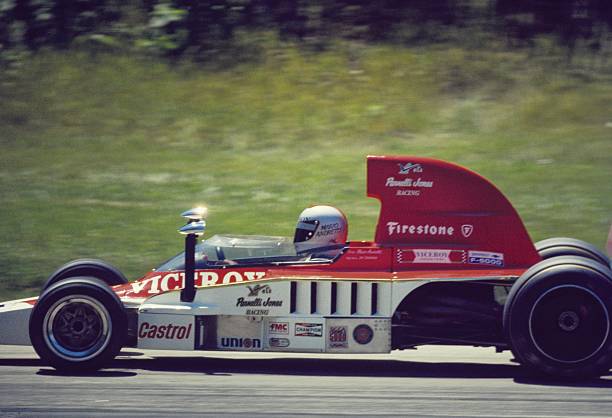 Elkhart Lake, Wisconsin, July 28, 1974. One of my personal favorite memories of Mario Andretti was watching him race his Vel's Parnelli Jones/Viceroy Lola T332 Chevrolet in the Formula 5000 series. Here he is on the way to the win at Road America. F5000 cars were brutally fast and sounded great with their booming, fuel-injected V8s. And Mario and Brian Redman had some fierce battles. Brian Redman was second that day in his Lola 332 Chevrolet.
Elkhart Lake, Wisconsin, July 28, 1974. One of my personal favorite memories of Mario Andretti was watching him race his Vel's Parnelli Jones/Viceroy Lola T332 Chevrolet in the Formula 5000 series. Here he is on the way to the win at Road America. F5000 cars were brutally fast and sounded great with their booming, fuel-injected V8s. And Mario and Brian Redman had some fierce battles. Brian Redman was second that day in his Lola 332 Chevrolet.
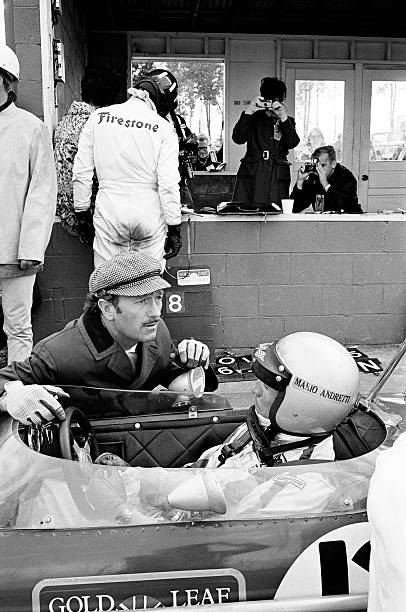
Watkins Glen, October 1968. Colin Chapman and Mario Andretti confer in the pits during Mario's F1 debut at the U.S. Grand Prix. Mario was issued a well-worn Gold Leaf Team Lotus 49B Ford Cosworth, one of three entries by Team Lotus for the race. The other two Lotus drivers were Graham Hill (No. 10) and Jackie Oliver (No. 11). Mario stunned the crowd - and the F1 establishment - by putting his Lotus on the pole, turning a lap of 1:04.20, just edging Jackie Stewart (No. 15 Matra MS10 Ford Cosworth), who turned a lap of 1:04.27. Needless to say, it was the pole heard around the world. Andretti would drop out of the race with clutch and bodywork issues and Stewart would go on to win, but Mario served notice that he would be a force to be reckoned with in F1 when given the proper opportunity.
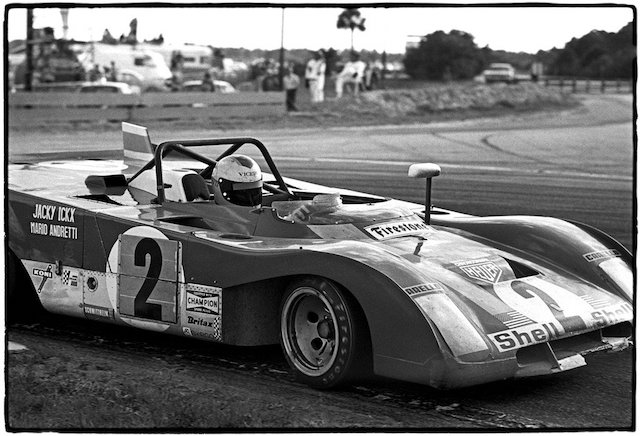
12 Hours of Sebring, 1972. Mario shared the No. 2 Scuderia Ferrari 312 PB with Jacky Ickx. The dynamic duo won by two laps over the No. 4 Scuderia Ferrari 312 PB driven by Clay Regazzoni and Brian Redman.
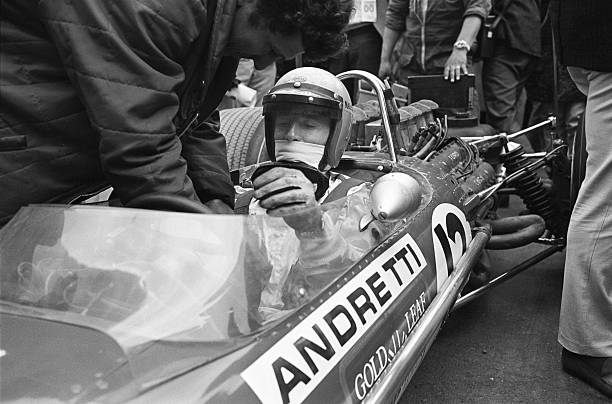
U.S. Grand Prix, Watkins Glen, New York, October 1968. Worth another look: Mario in his Gold Leaf Team Lotus 49B Ford Cosworth. His pole that fall weekend shocked the F1 establishment.
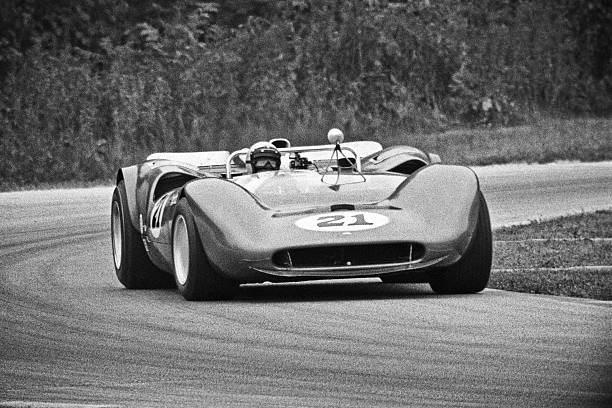
Elkhart Lake, Wisconsin, September 1, 1968. Mario Andretti in the No. 21 Bignotti Enterprises Lola T70 Mk.3 DOHC Ford during the Road America Can-Am. The Bignotti-entered Lola was noncompetitive, largely because of the choice of the DOHC Ford Indy V8. Mario qualified a full four seconds off the pole time set by Bruce McLaren (No. 4 McLaren M8A Chevrolet) and did not finish due to, you guessed it, a blown engine.
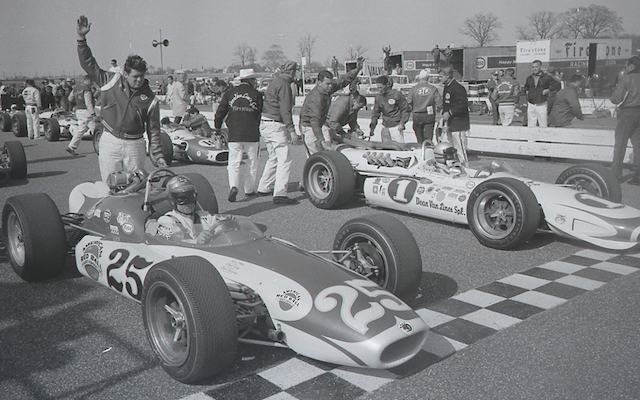
Trenton Speedway, Trenton, New Jersey, April 23, 1967. Mario Andretti (No. 1 Al Dean Dean Van Lines Brawner Hawk II/Ford) and Lloyd Ruby (No. 25 American Red Ball Mongoose/Offy) shared the front row for the 150-mile USAC Champ Car Series race, the second race of the season. Mario led all 150 laps on his way to the win. Ruby dropped out after only fifteen laps due to Turbo issues.
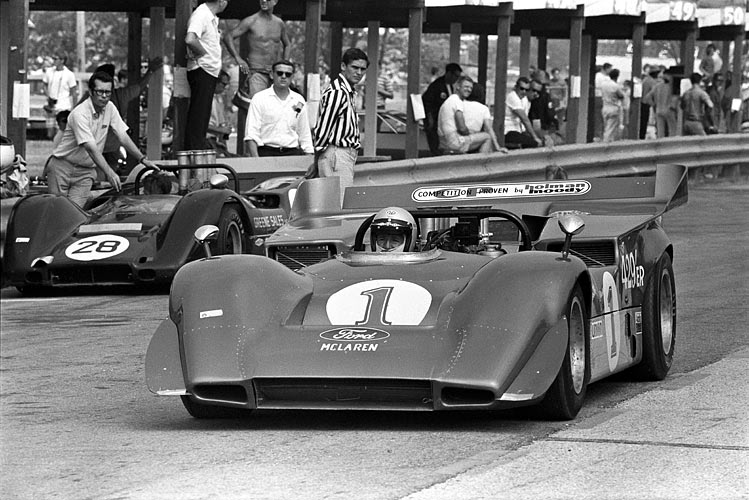
Elkhart Lake, Wisconsin, August 1969. Mario Andretti in the No. 1 Holman & Moody McLaren M6B 429 Ford during practice for the Road America Can-Am. This "429er" was more competitive, as Mario qualified in third position, with a time of 2:08.400. Denny Hulme (No. 5 Gulf/Reynolds Aluminum McLaren M8B Chevrolet) got the pole with a 2:06.300, with teammate Bruce McLaren (No. 4 Gulf/Reynolds Aluminum McLaren M8B Chevrolet) next with a 2:07.400. Bruce won that day, Denny was second, and Mario didn't finish due to drive shaft issues.
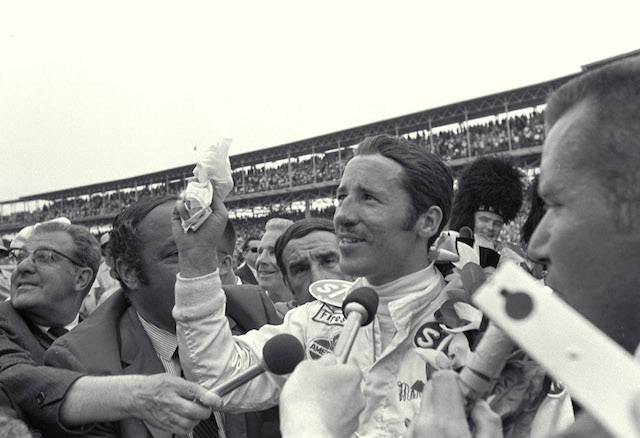
Indianapolis Motor Speedway, May 30, 1969. Mario Andretti (and Andy Granatelli) in Victory Lane after Mario won the Indy 500 in his No. 2 STP Oil Treatment Brawner Hawk/Ford. It was thought to be the first of many victories in "The Greatest Spectacle In Racing" for Mario, but alas it was not to be. Dan Gurney (No. 48 All American Racers Olsonite Eagle/Ford) was second that day, and Bobby Unser (No. 1 Bardahl Lola/Offy) finished third.
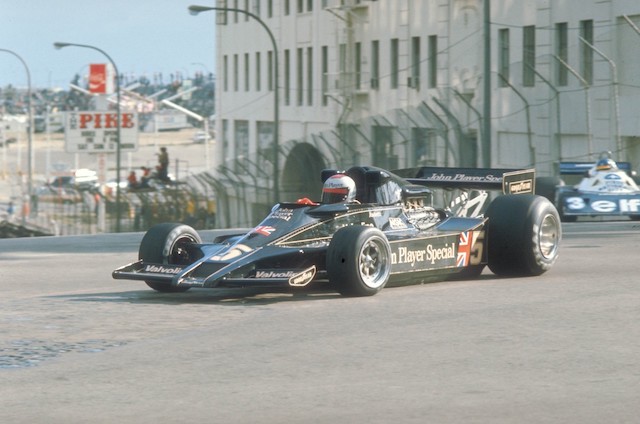
Long Beach, California, April, 1977. Mario Andretti in the No. 5 John Player Team Lotus 78 Ford Cosworth during the U.S. Grand Prix West. Mario won, becoming the first American driver to win a F1 race held in America. Mario became only the second American to win the F1 World Championship in 1978.
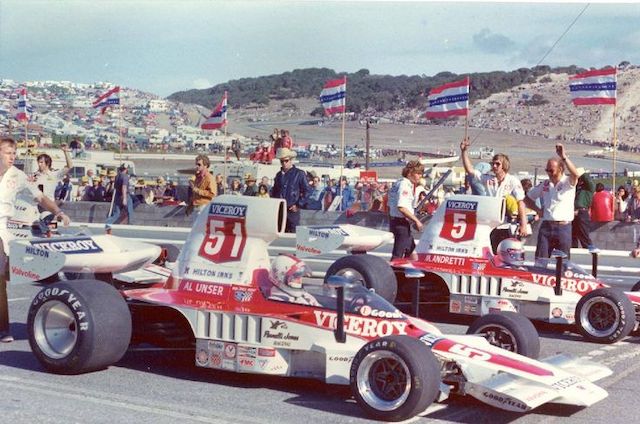
Laguna Seca, October 12, 1975. Mario Andretti (No. 5 Vel's Parnelli Jones Viceroy Lola T332 Chevrolet) and Al Unser (No. 51 Vel's Parnelli Jones Viceroy Lola T332 Chevrolet) on the front row for the F5000 Monterey Grand Prix. Mario won Qualifying Heat 1 and Al won Qualifying Heat 2. Mario and Al ran 1-2 in the 50 lap feature race.
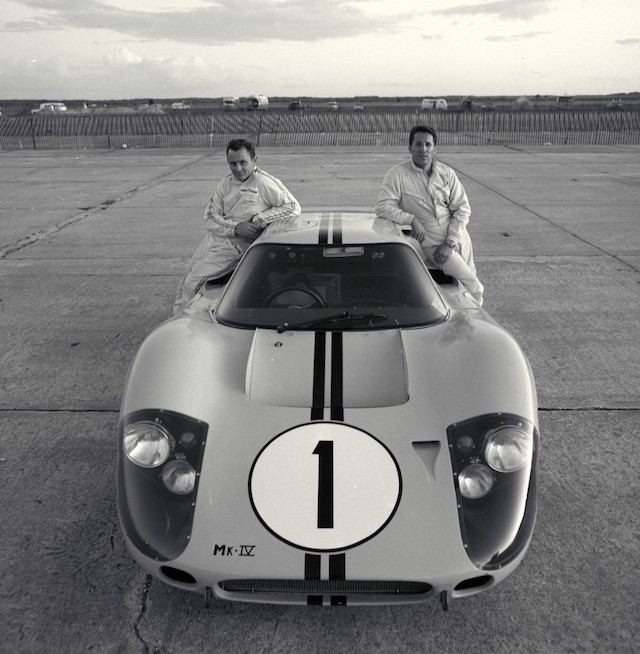
Bruce McLaren and Mario Andretti next to the No. 1 Ford Mk IV before their dominant win in the 1967 12 Hours of Sebring. The Ford Mk IV was only entered in two races in 1967: The 12 Hours of Sebring and the 24 Hours of Le Mans. It won them both.
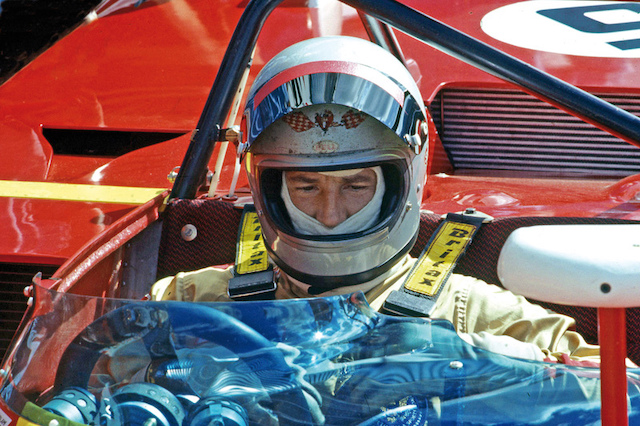
If there was a Mount Rushmore for American racing stars, my choices would include: Mario Andretti, A.J. Foyt, Dan Gurney, Al Unser and Rick Mears. It's highly subjective - and debatable - of course, but that's my list and I'm sticking to it.





